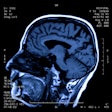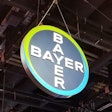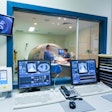Philips plans to drop a surprise on its MRI competition with Panorama 1.0T, a 1-tesla vertical-field open MRI scanner. The Andover, MA, company believes it has succeeded where other firms have failed in developing a 1-tesla open scanner for routine clinical use.
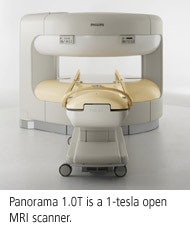
Panorama 1.0T employs a pair of superconducting magnets in a double-doughnut configuration, but set on its side rather than standing upright. The architecture gives the system the openness of a lateral open scanner with the image quality inherent in a high-field scanner. In addition, due to the scanner's vertical field, the 1-tesla Panorama has the image quality of a 1.5-tesla horizontal-field magnet, according to the company.
Philips used an active-shielded design for Panorama 1.0T, enabling the unit to be sited in a 1.5-tesla room. It features the same 32-channel architecture used in the company's Achieva scanner line, and is available in 16- and eight-channel versions.
The first Panorama 1.0T has been installed at an imaging center in Nevada, with the first commercial shipments taking place in April and May. The scanner will carry a price tag in between that of a 1.5-tesla and 3-tesla scanner, according to the company.
Philips plans to make the new scanner a central part of its marketing plans, advising potential customers who have the capability to house more than one magnet that the ideal configuration is a 3-tesla scanner for advanced studies and a Panorama 1.0T for open scanning.
The company will also demonstrate recent advances to the Achieva platform, introduced at last year's RSNA show. The line features Philips' FreeWave 32-channel radiofrequency architecture. Philips will demonstrate its Exam Cards concept for Achieva, which uses a set of preselected scan protocols for different types of anatomy. Exam Cards makes training easier for Achieva users, according to the company.
On the clinical side, Philips will discuss research going on in Japan using the company's whole-body RF coil for diffusion-weighted imaging with whole-body scanning (DWIBS). The technique produces PET-style images in less than five minutes, and could be useful for oncology screening applications, according to the company.
A major highlight of Philips' booth at the 2003 RSNA show was the Ambient Experience Pavilion, a futuristic representation of the imaging department of the future. Philips will show additional progress on the concept at this year's meeting, and will also show how one facility, Lutheran Hospital in Chicago, has implemented the concept.
Finally, Philips hopes to show images from a 7-tesla Achieva scanner that the company has built. The vendor has a number of orders for research-oriented 7-tesla systems, and hopes to become a major player in the ultra-high-field segment.
By Brian Casey
AuntMinnie.com staff writer
November 15, 2004
Copyright © 2004 AuntMinnie.com

.fFmgij6Hin.png?auto=compress%2Cformat&fit=crop&h=100&q=70&w=100)

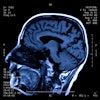

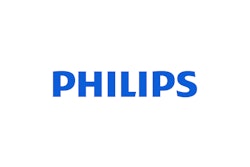

.fFmgij6Hin.png?auto=compress%2Cformat&fit=crop&h=167&q=70&w=250)


